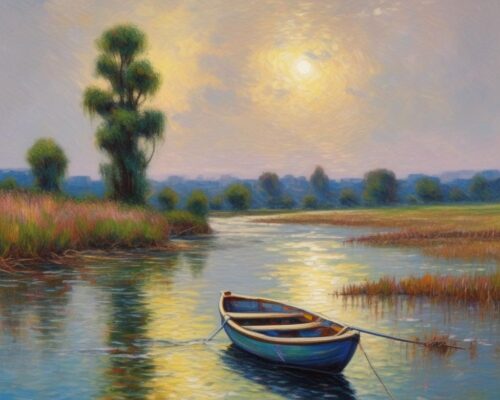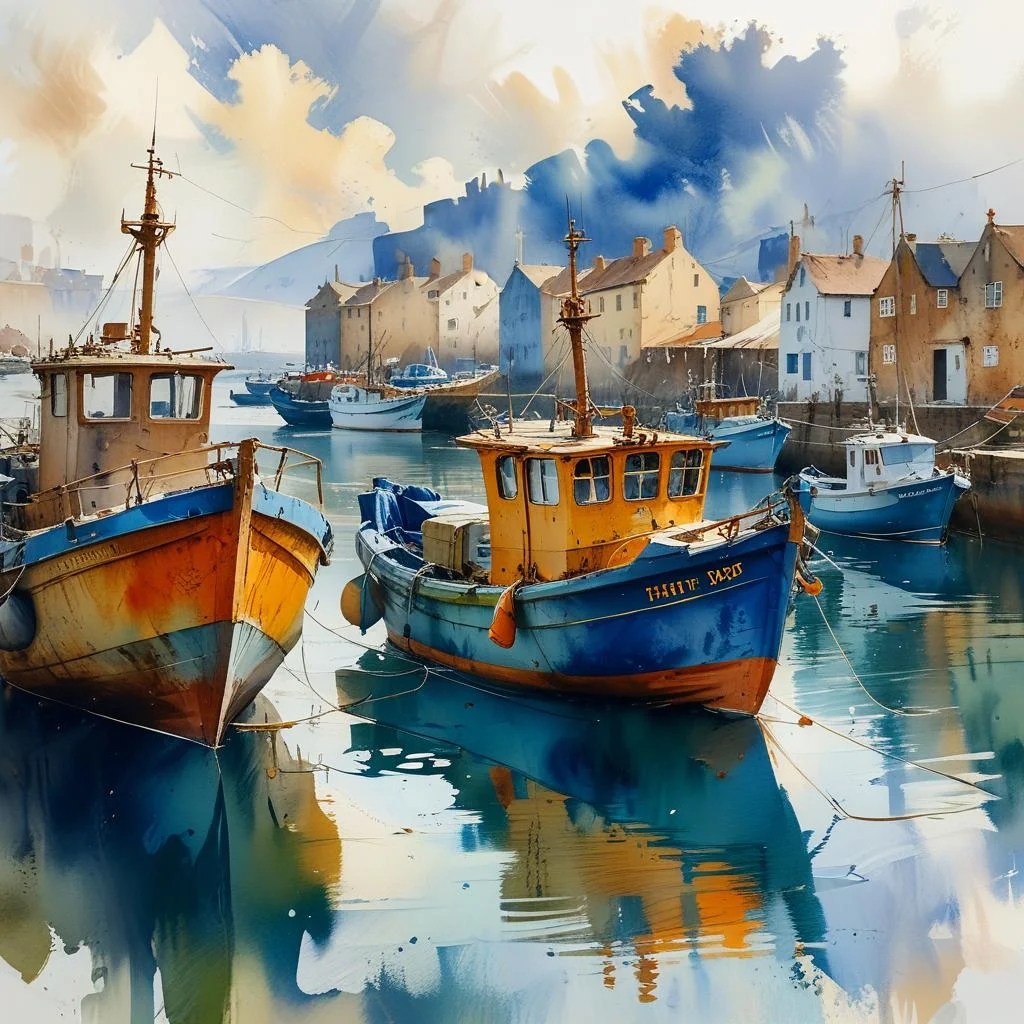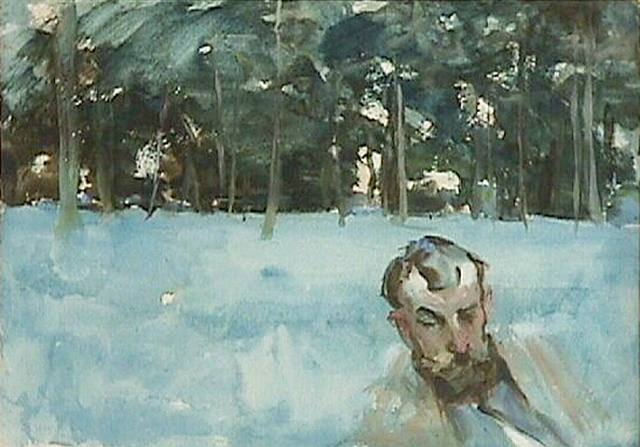Are you looking to dive into the world of Claude Monet but feel overwhelmed by the sheer volume of his artwork? Do you wonder which of his masterpieces are truly essential for any art lover to see? You’re not alone. Let’s explore the most famous Claude Monet paintings.
Key Takeaways
- Must-See Paintings: A curated list highlights 10 of Monet’s most famous works.
- “Impression, Sunrise”: This painting named the Impressionist movement, capturing light over detail.
- “Water Lilies”: A vast series demonstrating Monet’s light and color obsession in his Giverny garden.
- Varied Subjects: Showcases landscapes, cityscapes, and portraits.
- Capturing Light: Focuses on how light and atmosphere change, using quick strokes and color.
Monet, the founder of Impressionism, created nearly 2,000 paintings throughout his life, each capturing the fleeting beauty of nature and light. With so many options, it can be challenging to know where to start. This guide will introduce you to the 10 most famous Claude Monet paintings you need to see, providing insights into each piece that will enrich your appreciation of his work.
Monet’s paintings are not just visual experiences; they are emotional journeys that reflect his unique perception of the world. From serene water lilies to bustling urban scenes, each painting tells a story. So, grab a cup of coffee, and let’s explore these masterpieces together.
10 Most Famous Claude Monet Paintings
1. Impression, Sunrise (1872)
Description: This iconic painting is credited with giving the Impressionist movement its name. Depicting the port of Le Havre at sunrise, Monet captures the soft hues of dawn with quick brush strokes that evoke the shimmering light on the water.
Why You Need to See It: Impression, Sunrise exemplifies Monet’s revolutionary approach to painting, focusing on light and color rather than detail. It invites viewers to experience the moment rather than just observe it.
Current Location: Musée Marmottan Monet, Paris, France (note all current locations are 2025)

2. Water Lilies Series (1897-1926)
Description: This series includes approximately 250 paintings, all showcasing Monet’s flower garden at Giverny. The works vary in size and mood, capturing the reflections of light on the water’s surface.
Why You Need to See It: The Water Lilies series represents Monet’s obsession with capturing the effects of light and color. Each piece invites you to immerse yourself in the tranquility of nature.
Current Location: Multiple institutions worldwide
Monet’s approximately 250 Water Lilies paintings are distributed across numerous prestigious museums globally. The most significant installations include:
- Musée de l’Orangerie, Paris: Houses eight large water lily murals in specially designed oval rooms, donated by Monet to the French state after World War I
- Musée d’Orsay, Paris: Contains several Water Lilies works in permanent collections
- National Gallery, London: Houses a major Water-Lilies work measuring over 200 × 426 cm
- Metropolitan Museum of Art, New York: Multiple Water Lilies paintings
- Museum of Modern Art, New York: Contains works from the series
- Art Institute of Chicago: Houses several Water Lilies paintings

3. Woman with a Parasol (1875)
Description: This vibrant painting features Monet’s wife, Camille, and their son, Jean, in a sunlit field. The dynamic brushwork and the play of light create a sense of movement and joy.
Why You Need to See It: Woman with a Parasol captures a fleeting moment of leisure and happiness, showcasing Monet’s ability to convey emotion through color and light.
Current Location: National Gallery of Art, Washington, D.C., USA

4. The Japanese Bridge (1899)
Description: This painting depicts a picturesque Japanese bridge in Monet’s garden at Giverny, surrounded by lush greenery and water lilies. The vibrant colors and intricate details create a serene atmosphere.
Why You Need to See It: The Japanese Bridge is a testament to Monet’s fascination with Japanese culture and his ability to blend different artistic influences into his own unique style.
Current Location: Multiple prestigious institutions
The approximately 12 paintings from Monet’s Japanese Bridge series are housed in various museums:
- National Gallery of Art, Washington, D.C.: Contains “The Japanese Footbridge” (1899)
- Philadelphia Museum of Art: Houses “Japanese Footbridge and the Water Lily Pool, Giverny” (1899)
- Musée d’Orsay, Paris: Contains works from the series
- Metropolitan Museum, New York: Multiple Japanese Bridge paintings
- Princeton University Art Museum: Houses works from the series
- Museum of Fine Arts, Houston: Contains “The Japanese Footbridge, Giverny” (c. 1922)

5. Rouen Cathedral Series (1892-1893)
Description: Monet painted over 30 canvases of Rouen Cathedral, capturing its façade at different times of day and under varying weather conditions. The series showcases his exploration of light and shadow.
Why You Need to See It: The Rouen Cathedral series highlights Monet’s innovative approach to painting and his commitment to capturing the essence of a subject through changing light.
Current Location: Current Locations: Scattered across international museums
The 30+ paintings of Rouen Cathedral are distributed worldwide:
- Musée d’Orsay, Paris: Contains several cathedral paintings
- National Gallery of Art, Washington, D.C.: Houses “Rouen Cathedral, West Façade, Sunlight”
- National Museum Wales: Contains “Rouen Cathedral: Setting Sun”
- National Gallery, London: Multiple cathedral paintings
- Getty Museum, Los Angeles: Houses “The Portal of Rouen Cathedral in Morning Light”

6. The Artist’s Garden at Giverny (1900)
Description: This painting features Monet’s beloved garden at Giverny, bursting with colorful flowers and lush greenery. The vibrant colors and lively composition invite viewers into his personal paradise.
Why You Need to See It: The Artist’s Garden at Giverny reflects Monet’s deep connection to nature and his ability to transform his surroundings into a canvas of color and light.
Current Location: Musée d’Orsay, Paris, France

7. The Houses of Parliament, Sunset (1903)
Description: This piece depicts the Houses of Parliament in London at sunset, with the iconic structure bathed in warm hues of orange and pink. The atmospheric effects create a sense of drama and beauty.
Why You Need to See It: The Houses of Parliament series illustrates Monet’s fascination with urban landscapes and his ability to capture the interplay of light and architecture.
Current Location: International distribution
The 19 known paintings of London’s Houses of Parliament are housed in museums worldwide:
- Art Institute of Chicago: Contains “Houses of Parliament, London”
- National Gallery of Art, Washington, D.C.: Houses “The Houses of Parliament, Sunset”
- Metropolitan Museum of Art, New York: Contains “The Houses of Parliament (Effect of Fog)”
- High Museum of Art, Atlanta: Houses “Houses of Parliament in the Fog”
- Brooklyn Museum: Contains “Houses of Parliament, Sunlight Effect”
- Musée d’Orsay, Paris: Houses “Houses of Parliament, Sun Breaking Through the Fog”

8. Haystacks Series (1890-1891)
Description: Monet painted several variations of haystacks throughout the seasons, capturing the changing light and atmosphere. Each painting showcases the same subject under different conditions.
Why You Need to See It: The Haystacks series exemplifies Monet’s exploration of color and light, demonstrating how the same subject can evoke different emotions and moods.
Current Location: Multiple institutions worldwide
The 25 paintings in Monet’s revolutionary Haystacks series are distributed among major museums globally:
- Hill-Stead Museum, Connecticut: Contains two Haystacks paintings
- Art Institute of Chicago: Contains six paintings from the series, including “Wheatstacks (End of Summer)” and “Wheatstack, Snow Effect, Overcast Day”
- Musée d’Orsay, Paris: Houses several works including “Stacks, End of Summer”
- Musée Marmottan Monet, Paris: Contains multiple Haystacks paintings
- Museum of Fine Arts, Boston: Multiple works including “Haystack, Morning Snow Effect”
- Metropolitan Museum of Art, New York: Houses “Haystacks (Effect of Snow and Sun)”

9. The Cliff Walk at Pourville (1882)
Description: This painting depicts two women walking along a cliffside path overlooking the sea. The vibrant colors and dynamic brushwork create a sense of movement and freedom.
Why You Need to See It: The Cliff Walk at Pourville captures the essence of leisure and beauty, showcasing Monet’s ability to convey the joy of nature and the human experience.
Current Location: Art Institute of Chicago, USA

10. The Magpie (1868-1869)
Description: This early work features a snowy landscape with a solitary magpie perched on a fence. The use of light and shadow creates a sense of depth and tranquility.
Why You Need to See It: The Magpie is a beautiful example of Monet’s early style, showcasing his skill in capturing the beauty of nature through light and color.
Current Location: Musée d’Orsay, Paris, France

Top 10 List of Claude Monet’s Favorite Subjects
{based on the number of paintings he created for each)

- Water Lilies (Nymphéas) – Approximately 250 paintings
Monet’s most prolific series, featuring the water lily pond in his garden at Giverny. - Rouen Cathedral – Around 30 paintings
A series capturing the cathedral’s facade under various lighting conditions. - Haystacks (Grainstacks) – About 25 paintings
A pivotal series in the development of Impressionism, depicting haystacks in different seasons. - Poplar Trees – Approximately 19 paintings
A series focusing on the trees along the Epte River. - Venice – Around 30 paintings
A series inspired by his visits to Venice, capturing the city’s unique landscapes. - London Thames – Roughly 10 paintings
Monet’s impressions of the Thames River, often featuring the Houses of Parliament. - Seine River – Estimated 10-15 paintings
Depictions of the Seine, including its banks and bridges. - Japanese Bridge – Approximately 10 paintings
Part of his Giverny garden series, featuring the iconic red bridge. - Boats on the Seine – Around 10 paintings
Captures the boats and maritime activity along the Seine. - Other Landscapes – Variable numbers
Includes various rural and urban landscapes that don’t fit into the larger series.
This list reflects Monet’s profound fascination with nature, light, and color, as well as his ability to capture the essence of his subjects through multiple variations. The numbers are approximate and based on available sources, acknowledging potential variations in different references.
Monet’s Style
Meet Claude Monet, the wizard who turned painting into a magical light show! Instead of drawing perfect details, he used wild, quick brushstrokes and vibrant colors to catch how light transforms everything around us.
Imagine painting the same haystack over and over, showing how it changes from sunrise to sunset. That’s exactly what Monet did! He broke all the boring old art rules, creating paintings that feel alive and breathing. His art isn’t about being perfect – it’s about capturing the sparkling, ever-changing magic of a single moment.
Monet’s Influence on the Art World
Imagine painting a world where colors dance and light tells stories! Monet influenced tons of artists like Renoir, Van Gogh, and American painters who loved his wild color techniques. He showed everyone that art isn’t about perfect details – it’s about capturing magical moments. His revolutionary approach turned painting into a game of light, color, and feeling, inspiring generations of artists to see the world differently!
Wrapping it Up
Claude Monet’s paintings are a celebration of light, color, and the beauty of nature. Each of the ten works highlighted here offers a unique glimpse into his artistic journey and his profound impact on the Impressionist movement. Whether you’re a seasoned art enthusiast or a casual observer, these masterpieces are essential viewing for anyone looking to appreciate the depth and beauty of Monet’s work.
Links to External Resources
By immersing yourself in the world of Claude Monet, you not only appreciate his art but also gain insight into the emotions and experiences that shaped his remarkable career. Each painting serves as a reminder of the beauty that surrounds us and the fleeting moments that inspire creativity. Enjoy your exploration of Monet’s masterpieces!



